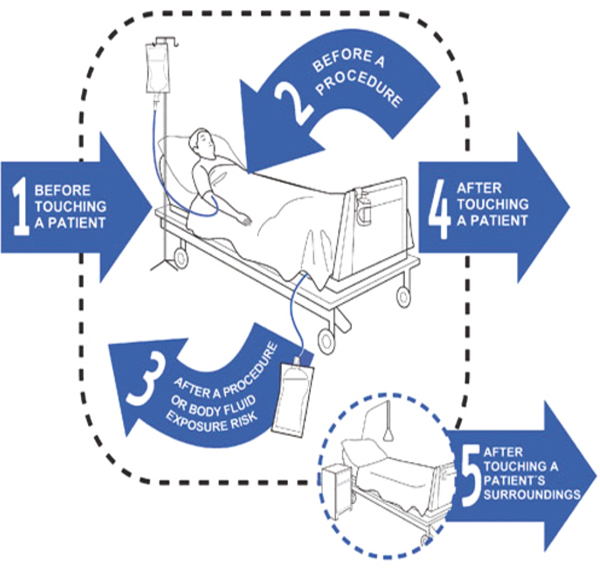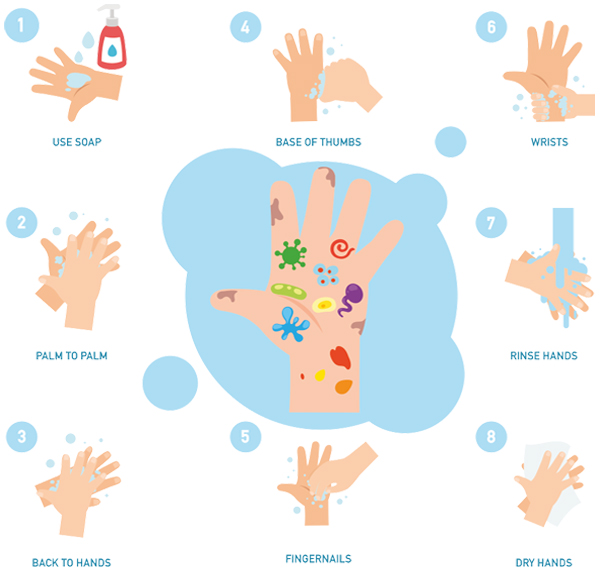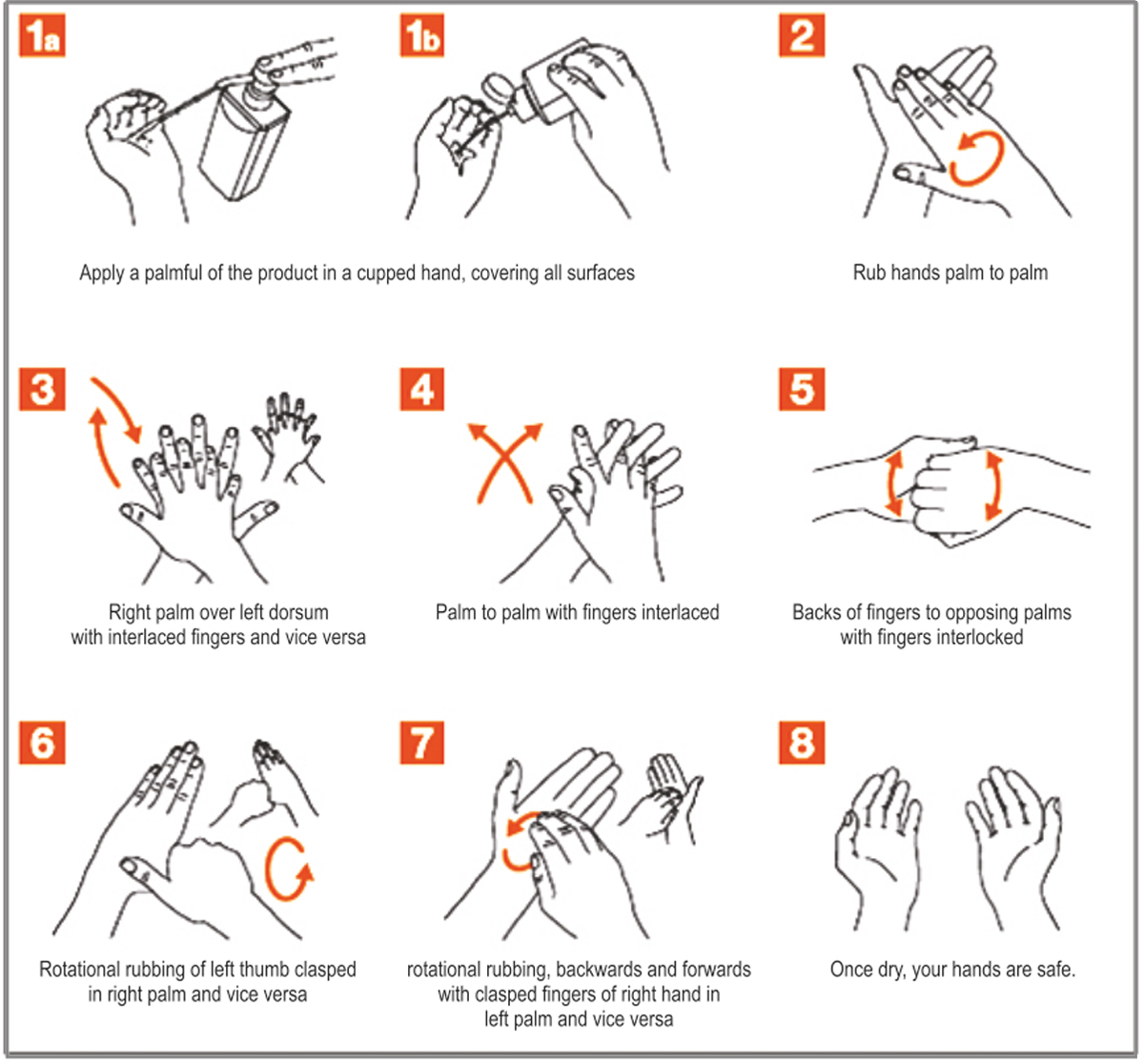Hand Hygiene

Wash Your Hands

How to hand Rub?

Key Points
Hand hygiene:
Pathogenic organisms from colonized and infected patients (and sometimes from the environment) transiently contaminate the hands of staff during normal clinical activities and can then be transferred to other patients. Hand transmission is one of the most important methods of spread of infectious agents in health care facilities. Proper hand hygiene is an effective method for preventing the transfer of microbes between staff and patients. Increasing hand-washing compliance by 1.5 – 2 folds would result in a 25-50-% decrease in the incidence of healthcare associated infections. Wash hands with plain or antimicrobial soap and water or rub hands with an alcohol-based formulation before handling medication or preparing food (steps shown in figure1 a, b)
Five (5) Moments in Hand Hygiene :
Hand hygiene must be practiced
1. Before touching a patient.
2. Immediately before performing a clean or aseptic procedure, including handling an invasive device for patient care, regardless of whether or not gloves are used.
3. Promptly after contact with body fluids, excretions, mucous membranes, non-intact skin, or wound dressings regardless of whether or not gloves were used.
4. After touching a patient and his/her immediate surroundings, even when leaving the patient’s side.
5. After contact with inanimate objects (including medical equipment and furniture) in the immediate vicinity of the patient. Perform hand wash when hands are visibly dirty.
Surgical Hand Scrub:
1. Surgical hand scrub with medicated soap or surgical handrub with alcohol-based formulations Either method is suitable for the prevention of surgical site infection. The combined effect rapid action at the beginning and inhibition of regrowth of bacteria under the gloved hands is best achieved by using an alcohol-based compound containing chlorhexidine, or with the addition of a quaternary ammonium compound such as mecetronium sulfate.
2. Steps For Surgical Hand Preparation:
Steps before starting surgical hand preparation-
- Keep nails short and pay attention to them when washing your hands most microbes on hands come from beneath the fingernails.
- Do not wear artificial nails or nail polish.
- Remove all jewellery (rings, watches, bracelets) before entering the operating room suite.
- Wash hands and arms up to elbows with a non-medicated soap before entering the operating room area or if hands are visibly soiled.
- Clean subungual areas with a nail file. Nailbrushes should not be used as they may damage the skin and encourage shedding of cells. Nailbrushes, if used, must be sterile and used only once. Reusable autoclavable nail brushes are available commercially.

